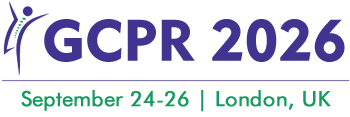Kinesiology, Biomechanics & Motion Analysis
A deeper understanding of human movement has led to the advancement of kinesiology, biomechanics & motion analysis, essential in optimizing rehabilitation strategies. Kinesiological research examines muscle function and coordination, aiding in the development of targeted therapies for injury recovery and performance enhancement. Biomechanical assessments, including gait analysis and joint kinetics, provide valuable insights into movement abnormalities, guiding clinicians toward more precise interventions. Motion capture systems and pressure-mapping technologies are now widely used to evaluate functional limitations and fine-tune prosthetics, orthotics, and rehabilitation devices. By applying physics and engineering principles to human movement, specialists can refine therapeutic approaches, ultimately improving mobility, reducing pain, and preventing recurrent injuries.

Jay Spector
American Academy of Podiatric Sports Medicine (AAPSM), United States
Marcia J Scherer
Institute for Matching Person and Technology, United States
Marcos Brioschi
American Academy of Thermology, United States
Blair Gorenberg
Shirley Ryan Abilitylab, United States
Roberta Sartori
IRCCS Materno-Infanitle Burlo Garofolo, Italy
Cho Li Yin
Taichung Veterans General Hospital - VGHTC, Taiwan




Title : Best practice guidelines for the use of pharmacological neuromodulation in disorders of diminished motivation: A comprehensive approach
Vaidya Balasubramaniam, Illawarra and Shoalhaven Local Health District Hospitals, Australia
Title : A forgotten component of knee osteoarthritis
Ron Blehm, EEI Physio LLC, United States
Title : Functional outcomes of DSSA-Based pelvic rehabilitation combined with manual therapy and electrostimulation in men after oncologic surgery: A retrospective case series
Eren Uyar, Fizyomen Physiotherapy & Rehabilitation Center, Turkey
Title : We are living and working in the age of individualization
Marcia J Scherer, Institute for Matching Person and Technology, United States
Title : Efficacy of Inspiratory Muscle Training (IMT) in post-weaning ICU recovery: A clinical randomized controlled trial
Warda Khan, Chongqing Medical University, Pakistan
Title :
Subramanya Adiga, Middlemore Hospital, New Zealand